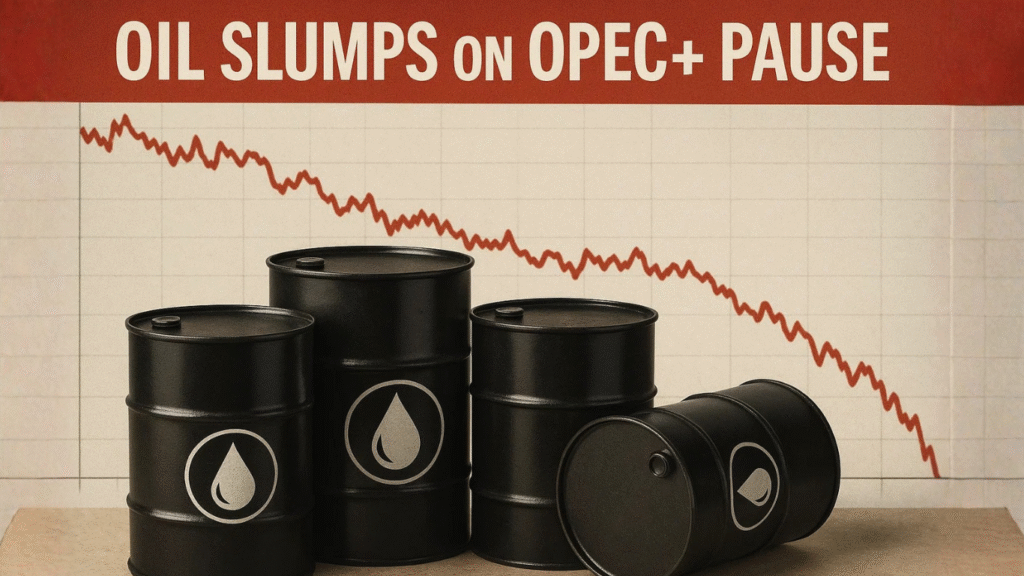Oil prices slipped on Tuesday as traders digested OPEC+’s weekend decision to pause output hikes through the first quarter of 2026, fueling fresh concerns about a potential supply glut.
By 05:05 ET (10:05 GMT), Brent crude futures for January delivery dropped 1.6% to $63.88 per barrel, while West Texas Intermediate (WTI) fell 1.7% to $60.02. The move reflected growing uncertainty about near-term demand recovery amid elevated production levels.
The Organization of the Petroleum Exporting Countries and its allies (OPEC+) confirmed a 137,000 barrels per day (bpd) increase for December — the final step in its gradual rollback of prior output cuts. However, the group signaled that no further hikes would be introduced early next year, citing “uncertain demand trends” and “seasonal softness.”
Analysts at ING noted that the oil market is “expected to be in peak surplus through early 2026.” Still, U.S. sanctions on Russia could disrupt trade flows, potentially tightening supply faster than expected.
Key Insights:
- OPEC+ Output: +137,000 bpd in December
- Brent Price: $63.88/barrel (−1.6%)
- WTI Price: $60.02/barrel (−1.7%)
- Fed Pause Impact: Increased market caution
Record U.S. Output Adds Pressure
Adding to oversupply concerns, U.S. Energy Information Administration (EIA) data showed American crude output hitting an all-time high of 13.79 million barrels per day in August — a 2.9% year-on-year increase and nearly 1% higher month-on-month.
This production strength, paired with OPEC+’s cautious stance, points to ample supply well into 2026. Traders fear that without stronger global demand, inventories could build rapidly, weighing further on prices.
Energy analysts suggest that OPEC+ may reconsider its policy if sanctions significantly curb Russian exports, narrowing the anticipated surplus. Still, current figures imply that the market remains comfortably supplied heading into next year.
Weak Demand Outlook Deepens

On the demand front, global economic signals remain soft. In the U.S., the Institute for Supply Management (ISM) reported that the manufacturing PMI slipped to 48.7 in October, marking its eighth consecutive month of contraction.
Meanwhile, similar data from China and Europe point to sluggish industrial activity, suggesting limited growth in fuel consumption during the winter months.
Investors now await the American Petroleum Institute’s (API) weekly stockpile report for further clues on demand trends and inventory levels.
With supply abundant and consumption lagging, oil markets face a delicate balance — one that could test OPEC+’s ability to stabilize prices in early 2026.


